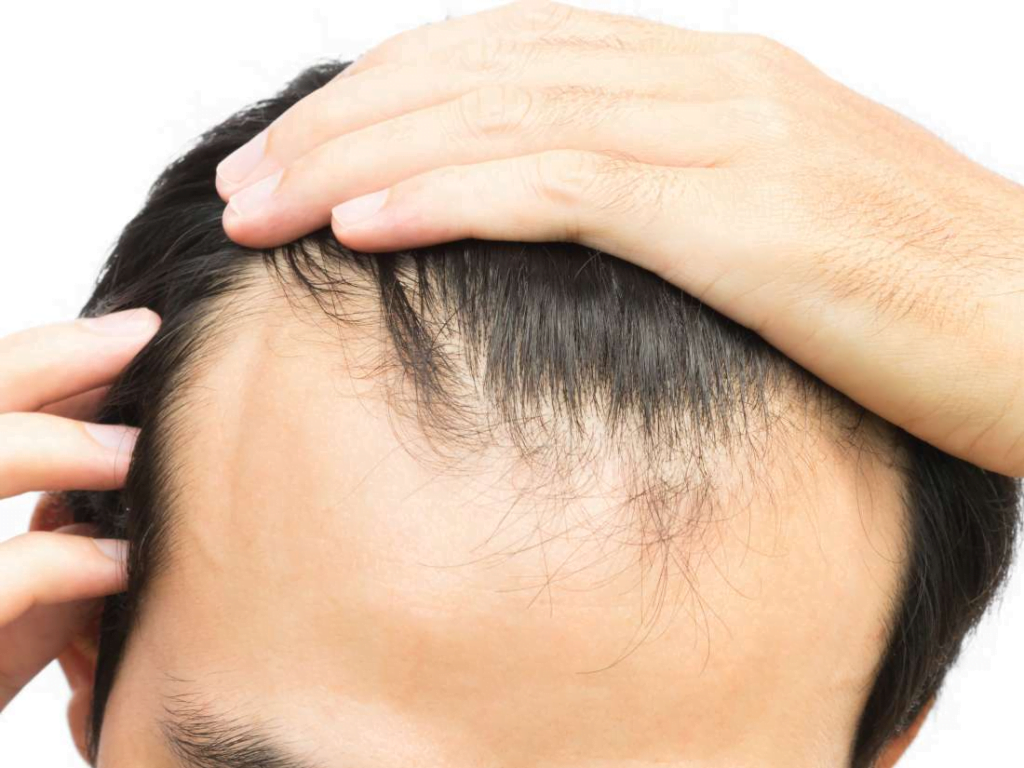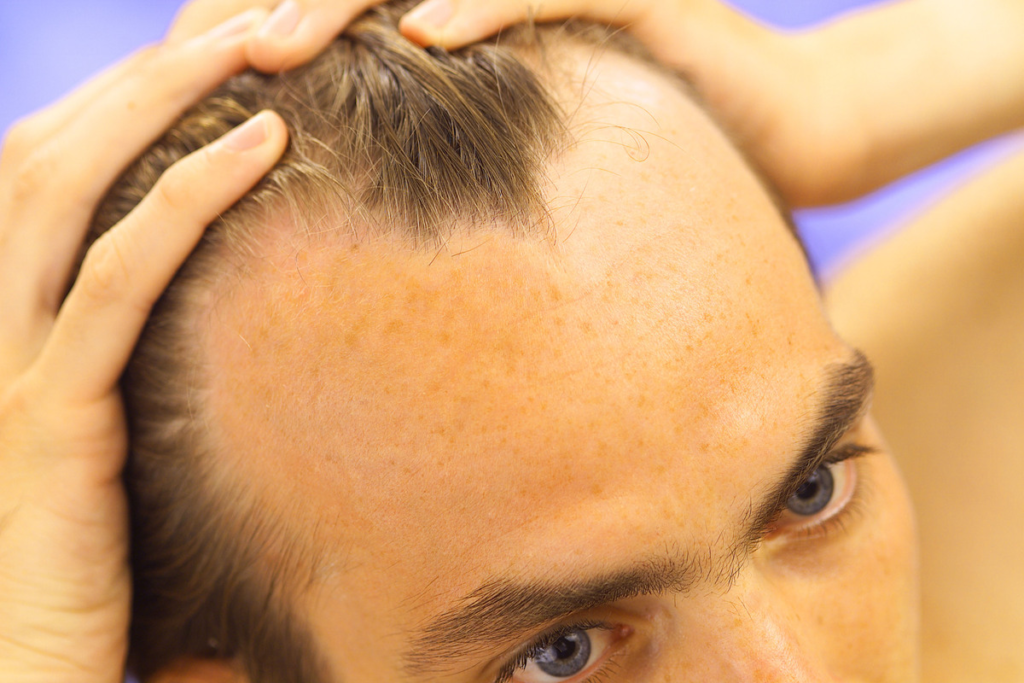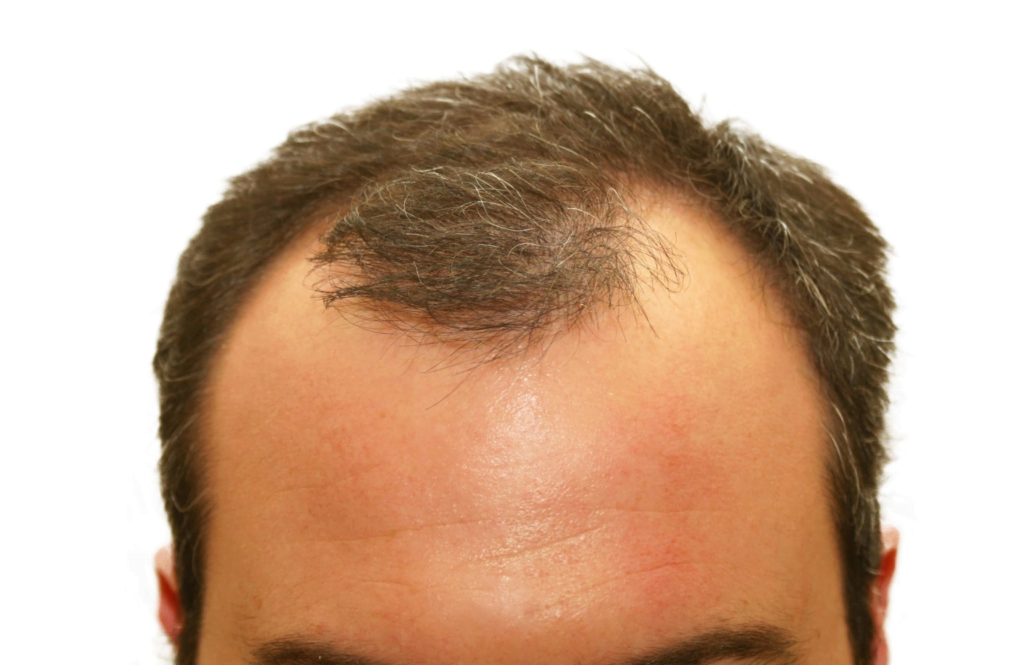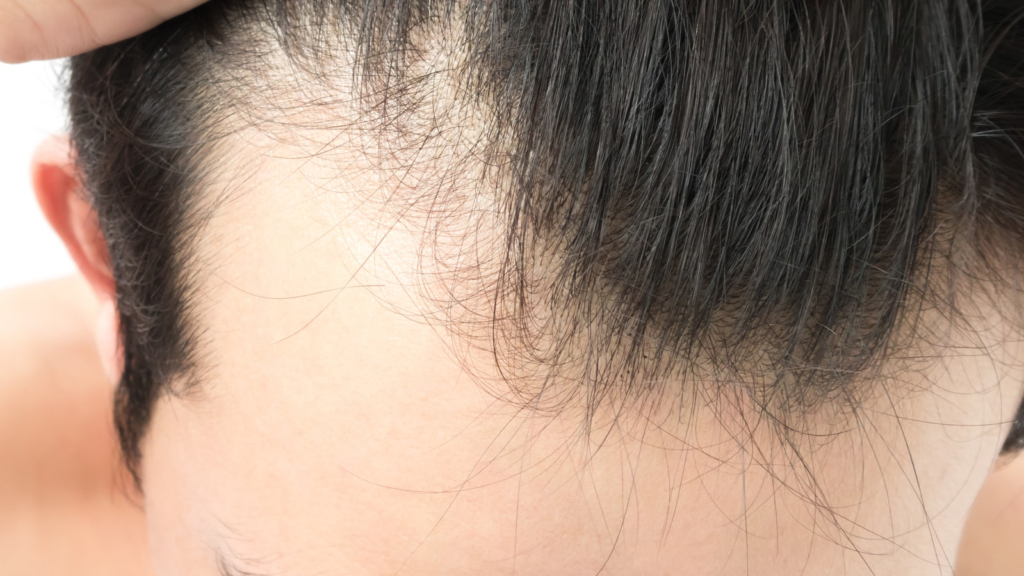The M-shaped hairline, characterized by a receding hairline that forms an “M” shape at the temples, is a common concern for both men and women. While it can be a natural part of aging, it can also be a sign of underlying hair loss conditions. Understanding what an M-shaped hairline is and what it means for your hair health can help you navigate your options with confidence.

İçindekiler
1. M-Shaped Hairline: Not Always a Sign of Loss
While M-shaped hairlines are often associated with hair loss, it’s important to remember that not every M-shaped hairline indicates a problem. Some individuals simply have this natural hair growth pattern from childhood, with no further receding expected.
2. Identifying an M-Shaped Hairline for Hair Loss
If you’re concerned about potential hair loss, there are a few ways to identify an M-shaped hairline associated with receding hair:
- Temple recession: Look for a gradual receding of the hairline at the temples, creating a pointed M shape.
- Thinning hair: Pay attention to any noticeable thinning of hair near the receding temples.
- Family history: Consider your family history of hair loss. If male pattern baldness or other hair loss conditions run in your family, an M-shaped hairline might be an early indicator.
3. Understanding the Causes
Several factors can contribute to an M-shaped hairline related to hair loss:
- Genetics: Androgenetic alopecia, commonly known as male or female pattern baldness, is a genetic predisposition that can cause an M-shaped hairline and hair loss.
- Hormonal changes: Fluctuations in hormones, such as those experienced during pregnancy, menopause, or certain medical conditions, can temporarily or permanently impact hair growth and lead to an M-shaped hairline.
- Stress: While not a direct cause, chronic stress can contribute to hair loss and exacerbate an existing M-shaped hairline.

4. Addressing M-Shaped Hairlines: Exploring Options
If you’re concerned about your M-shaped hairline and potential hair loss, you have several options to explore:
- Hairstyle choices: Strategic haircuts and styling techniques can effectively camouflage an M-shaped hairline and create a fuller appearance.
- Medications: Topical medications like minoxidil and prescription medications like finasteride can help slow down hair loss and potentially stimulate new hair growth for some individuals.
- Hair transplant procedures: For those seeking a more permanent solution, hair transplant surgery can be an option to address a receding M-shaped hairline.
5. Embrace Confidence: It’s All About Individuality
Remember, an M-shaped hairline does not define you. With various styling options and hair loss solutions available, you can navigate this experience with confidence and express yourself authentically. If you have concerns, consulting a dermatologist or trichologist can provide personalized advice and help you explore your options based on your individual needs and goals.

Conclusion: Understanding and Managing Your M-Shaped Hairline
An M-shaped hairline can be a source of concern, but with proper understanding and exploration of available options, you can effectively manage it and feel confident in your appearance. Remember, it’s not always a sign of hair loss, and even if it is, there are solutions available to address your specific needs and preferences. Embrace your individuality and consult a healthcare professional if you have further questions or require personalized guidance.
Hairtrans.com was founded by world-famous plastic surgeon Dr. MFO, who is an expert in facial feminization or facial masculinization surgeries, and is managed under his leadership. Would you like to have a hair transplant under the coordination of a plastic surgeon with many years of experience?
Whether you are a trans woman or a natural born male or female, if you are looking for the best hair transplant, contact us now.

M-Shaped Hairline FAQ
Q: Is an M-shaped hairline always a sign of hair loss?
A: No, not necessarily. Some individuals naturally have an M-shaped hairline without experiencing further receding hair. However, it can be an indicator of hair loss, especially if accompanied by thinning hair, temple recession, or a family history of baldness.
Q: How can I tell if my M-shaped hairline is due to hair loss?
A: Look for signs like a gradual receding hairline at the temples, thinning hair in those areas, and a family history of baldness. Consulting a dermatologist or trichologist can provide a definitive diagnosis and personalized advice.
Q: What are the causes of an M-shaped hairline related to hair loss?
A: Genetics (androgenetic alopecia), hormonal changes, and chronic stress are some potential contributing factors.
Q: What are my options for addressing an M-shaped hairline?
A: Options include strategic hairstyles, topical medications, prescription medications, and hair transplant surgery. Consulting a healthcare professional can help you determine the best approach for your individual situation.
Q: Should I be concerned about an M-shaped hairline?
A: While it’s a common concern, it doesn’t define you. Various solutions exist, and ultimately, the decision to address it depends on your comfort level and personal preferences.
Q: Is an M-shape hairline normal?
A: An M-shaped hairline, often referred to as a receding hairline, is a common occurrence in many individuals, particularly males, as they age. It is characterized by a gradual thinning of hair around the temples and forehead, resulting in a pattern that resembles the letter “M.” While this pattern is normal for many people, it can be distressing for some individuals, especially if it occurs at a young age or progresses rapidly.
Several factors can contribute to a receding hairline, including genetics, hormonal changes, aging, stress, and certain medical conditions. It’s essential to note that while some hair loss is natural and unavoidable, other cases may be indicative of an underlying health issue that warrants attention.
If you’re concerned about your hairline or experiencing significant hair loss, it’s advisable to consult with a dermatologist or a healthcare professional specializing in hair health. They can assess your specific situation, provide a proper diagnosis, and recommend appropriate treatment options, which may include lifestyle changes, medications, or hair restoration procedures.
In conclusion, while an M-shaped hairline is a common occurrence for many individuals and often a natural part of the aging process, it’s essential to monitor changes in your hair health and seek professional guidance if you have concerns about hair loss or its underlying causes.
Q: Is M shaped hairline rare?
While an M-shaped hairline, also known as a receding hairline, is not necessarily rare, its prevalence can vary among different populations and individuals. In general, receding hairlines are more commonly observed in men than in women, although it can occur in both genders.
The likelihood of developing an M-shaped hairline can be influenced by various factors, including genetics, hormonal fluctuations, aging, lifestyle choices, and underlying medical conditions. For some individuals, a receding hairline may start to manifest in their late teens or early twenties, while for others, it may not become noticeable until later in life.
While receding hairlines are relatively common, their severity and rate of progression can vary significantly from person to person. Some individuals may experience a gradual thinning of hair around the temples and forehead over many years, while others may notice more rapid and pronounced hair loss.
Overall, while not rare, an M-shaped hairline is a common occurrence for many individuals, particularly men, as they age. However, its impact and significance can vary widely depending on individual circumstances and perceptions.


